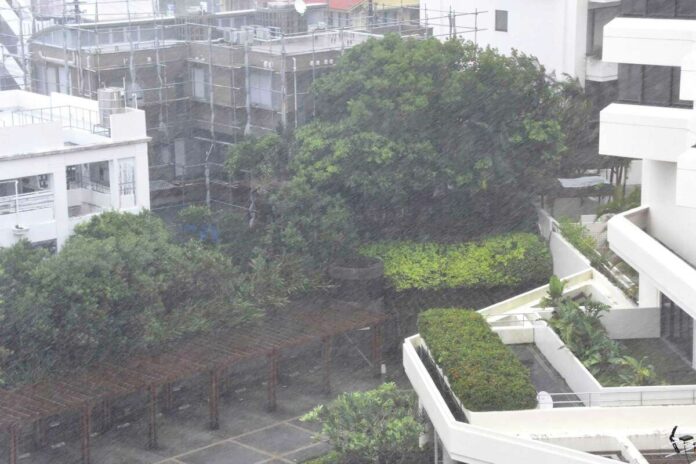In the shadows of East Asia, nature’s fury dances to an ever-intensifying beat. As the world bears witness to the third typhoon in as many weeks lashing southern Japan, and China grappling with the deadliest deluge in a century, climate scientists warn that the roulette game of extreme weather has become increasingly skewed due to global warming.
The recent storms, Khanun, Talim, and Doksuri, have wreaked havoc across the region, leaving behind a trail of destruction, fatalities, and displaced communities. From submerged suburbs in Manila to the historic downpour in Beijing, these events have become unnervingly frequent. Experts fear this is just the beginning.
While the full force of Typhoon Khanun threatens the tropical Okinawa islands, thousands of residents brace themselves for the 252km/h gusts, a phenomenon rarely experienced in this season. The island, usually bustling with tourists during peak season, now faces the eerie calm before the storm.
Yet, amidst the chaos and despair, a sobering reality emerges from the scientific community. Climate change, a looming specter haunting the world, has altered the rules of nature’s game. The words of Winston Chow, a prominent urban climate professor, echo through the tempestuous skies. He compares the changing weather patterns to a roulette wheel, with the odds increasingly stacked against humanity. As greenhouse gas emissions rise, the once black squares on the wheel are turning red, ushering in an era of unprecedented risks.
In the face of this ecological upheaval, China’s capital, Beijing, reels from an onslaught of rain. The city’s resilience is tested as the rain relentlessly pours down, breaking records dating back to the 19th century. Rivers swell, dams teeter on the brink of collapse, and communities struggle to rebuild amidst the aftermath. Over 974,400 people have been forced to evacuate, and the struggle against nature’s wrath is far from over.
As storms intensify, the adjacent regions of Beijing, such as Tianjin and Hebei province, also grapple with their share of misery. Villages, once peaceful and idyllic, become scenes of devastation as residents battle mud, rocks, and uprooted trees. These once-in-a-lifetime events now unfold with alarming regularity, as climate change shifts the very fabric of our natural world.

Yet, beyond China’s borders, the Philippines too bears the brunt of Mother Nature’s capriciousness. With rivers overflowing and dams threatening to breach, Manila’s large suburbs lay submerged, displacing hundreds of thousands. Tragedy strikes when a ferry capsizes, claiming the lives of 26 people in its wake. The relentless barrage of storms, Talim and Doksuri, paints a grim picture of an increasingly unpredictable world.
Before these typhoons, Asia was scorched by relentless heatwaves. Japan suffered a staggering 9,000 heatstroke admissions in the middle of July, while parts of China basked in record-breaking temperatures. Extreme heat and devastating storms; the haunting harmony of climate change continues to unfold.
In the realm of scientific prediction, a study foretells an even darker future. Typhoons, projected to double in destructive power over land by the end of the century, may yet be the prologue to an even more cataclysmic narrative.
As the storm clouds gather and the winds of change continue to blow, the world must confront its collective responsibility. The dance of nature’s fury has grown more intricate, and humanity stands at the center of this maelstrom. Time is of the essence, and urgent action is the key to altering the course of this climatic drama. The narrative of extreme weather can still be rewritten, but it requires a united front to counter the consequences of our past actions.
In the face of escalating risks, it is up to us to weave a tale of resilience, cooperation, and hope. Our future depends on how we respond to nature’s ominous overtures. Together, we can rewrite the ending of this story, and forge a new chapter of harmony with our planet.





